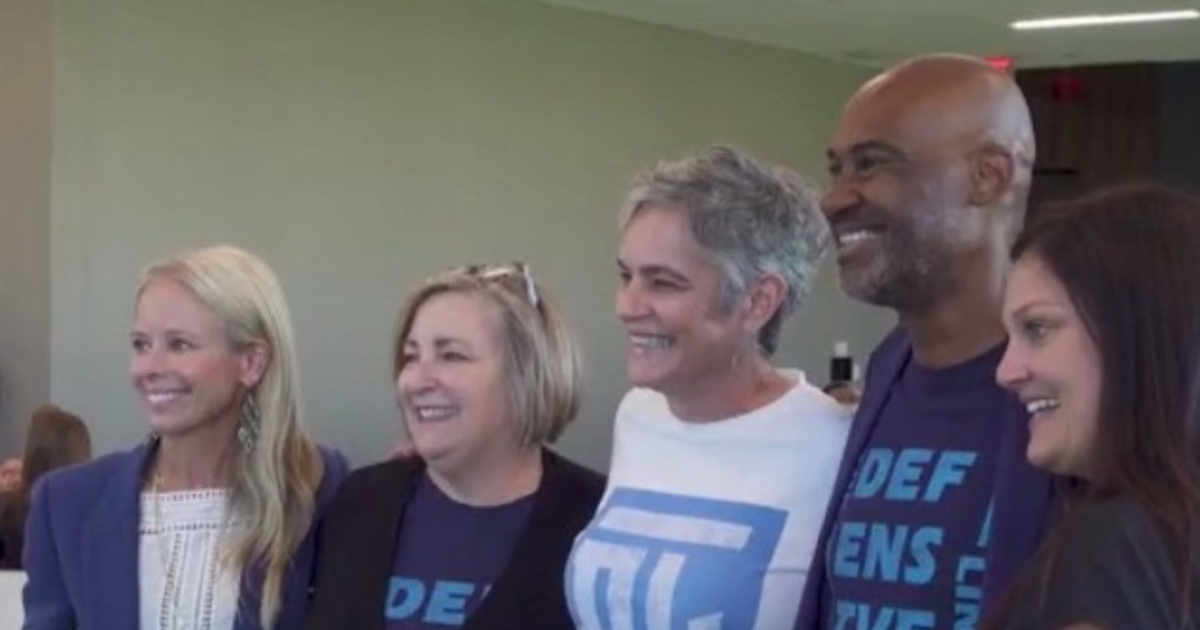'Mommy Belly' A Painful Reality for Many Moms
NORTH TEXAS (CBSDFW.COM) - Despite an athletic lifestyle, Katherine Hill says she was struggling to "bounce back" after pregnancy.
"My son is almost three and I still have people come ask me if I am pregnant," she says candidly.
When Hill became a mom for the first time, she knew little about a condition that affects as many as 3 in 5 women in their third trimester.
Despite how common Diastasis Recti Abdominis is, the condition often goes undiagnosed and untreated.
It is essentially a vertical gap between the front abdominal muscles. During pregnancy, the muscles stretch to accommodate the growing fetus. The connective tissue between the abdominal muscles can thin and weaken, and that can lead to a bulge in your belly.
That post-pregnancy bulge is commonly known as a "mommy pooch" or "mommy-tummy" and it will not go away with diet and exercise.
PAINFUL EFFECTS
DRA is not a cosmetic concern. Left untreated, it can cause significant back pain and make it difficult to lift heavy objects.
Hill knew something was wrong when simple day-to-day tasks like loading the dishwasher or bathing her baby boy were all of a sudden painful.
"Just the slight lean over the tub or sink was causing me a problem," she said.
HOW TO SPOT DRA?
DRA doesn't just impact moms.
"[It can also affect] weight lifters with a lot of strain and stress on their abdominals or older men that have issues managing the pressure," says Ashley Rawlins, a doctor of physical therapy at UT Southwestern. She specializes in women's health.
An ultrasound is the most accurate way to diagnose DRA but a simple at home test can help you decide if you need to speak to your doctor about it.
Rawlins says a disruption in any of your core muscles can lead to bigger issues down the road.
"Any kind of back pain, pelvic pain, those can all be issues related to DRA," Rawlings explains.
HEALING DRA?
Sometimes patients will have to undergo surgery.
Hill's doctor referred her to a physical therapist and worked on several exercises to strengthen her core muscles. After more than 2 years of therapy, she has seen an improvement.
"My diastasis is a V-shape," she said. "It was 3 finger widths wide. Now it is down to just 1 finger width," she said.
Hill says she will continue to work towards healing and hopes to bring awareness to this little known condition.
"I'm comfortable with my body and I know something's there. And I need to keep working on it."
AT HOME WORKOUTS
When aiming to tighten your core, crunches often come to mind.
Rawlins warns crunches done incorrectly could worsen the gap by creating pressure that pushes your belly forward in an already vulnerable area.
The physical therapist walks us through 5 simple exercises [see below] you can do at home to help strengthen your core muscles. Remember to speak to your doctor before starting any new workout routine.
Diastatis Crunch
Dead Bug
Getting Up, Lying Down
Core Engagement
Core Dog



